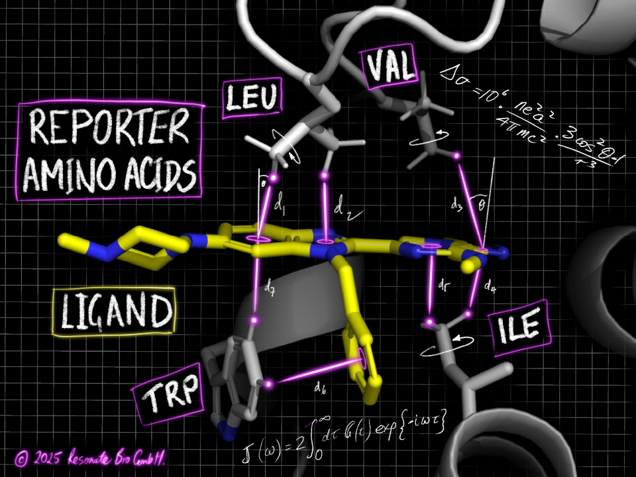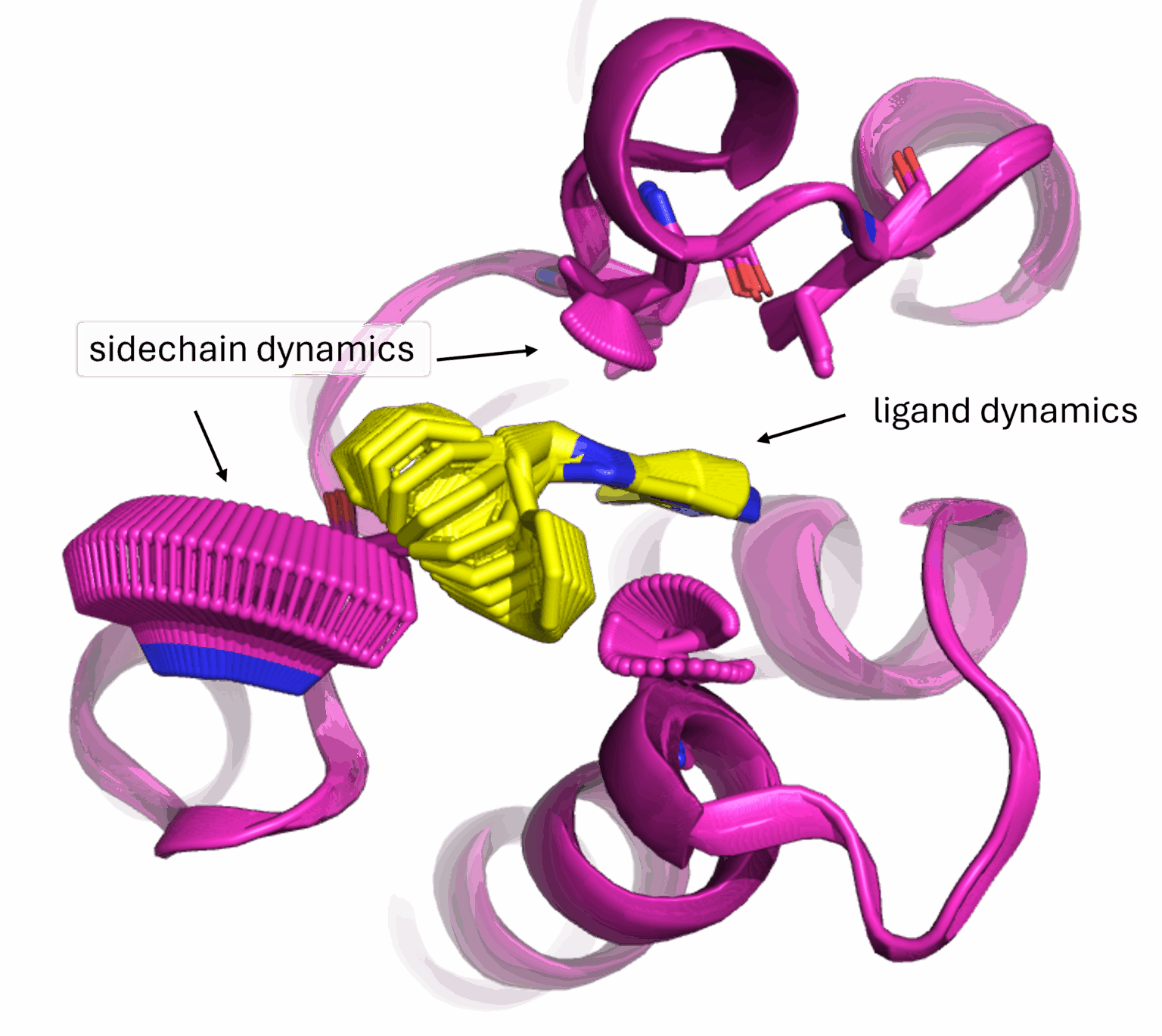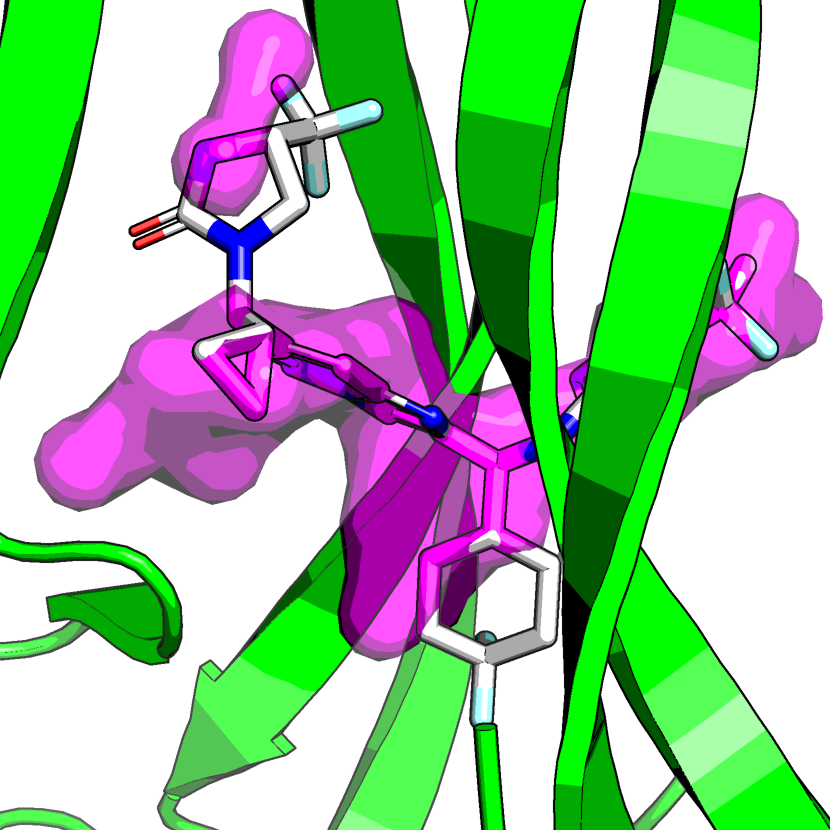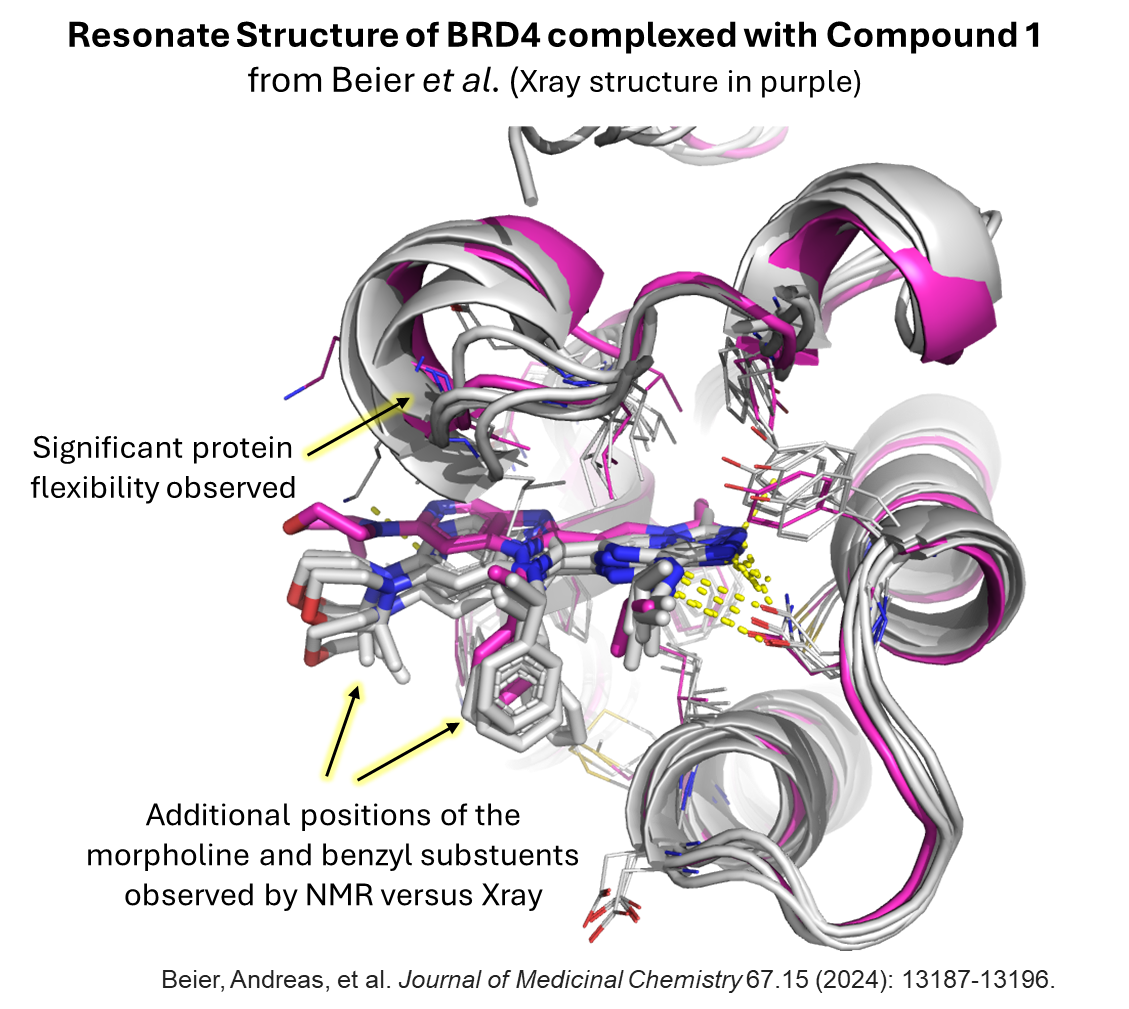Resonate Technology
Resonate Bio’s technology generates “movies” of dynamic, disease-causing proteins.
These “movies” are ensembles of protein-ligand structures that reflect the conformations of both ligand and protein that occur in solution as well as their relative populations. This is possible because our technology is a hybrid of AI algorithms and biophysical NMR data which is measured in solution. Importantly, this can be done for all compounds synthesized, in high throughput and at high resolution.
We call these Resonate Structures.

EVERY COMPOUND
The Nuclear Magnetic Resonance (NMR) biophysical measurements that Resonate’s technology requires are performed in solution which eliminates the requirement to generate suitable crystals or grids as is the case for X-ray crytallography and Cryo-EM.
HIGH THROUGHPUT
Resonate’s technology requires Nuclear Magnetic Resonance (NMR) experiments that require 30 minutes to a few hours of measurement time which allows Resonate Structures to be determined for all compounds synthesized.
HIGH RESOLUTION
Resonate structures are generated in three different levels: High Throughput structures which can be generated in a matter of a few hours, High Resolution structures which require 1-2 days and structures for highly Flexible Ligand which require an additional 1-2 days.
The Resonate Platform
The Resonate Bio technology uses experimental solution-state NMR spectroscopy enhanced with selective protein isotope-labeling and advanced AI computational workflows.
The platform consists of three modules: the Conformer Finder, Site Mapper and Structure Generator. These three modules applied together determine what the ligand-bound protein conformation (holo form) is, where the ligand binds and how the ligand binds. the movies of protein-ligand complexes.


Conformer Finder
Knowing the protein conformation that occurs when a drug candidate is bound is crucial to drug design. This is called the holo conformation. Both the protein backbone and the amino acid side chains in the holo conformation can vary significantly from the apo conformation (the form with no ligand bound). unboundcalled the apo conformation). The Conformer Finder module determines whether the apo and holo conformations vary and if so determines the backbone conformation and sidechain positions of the holo protein.

Site Mapper
Where a ligand binds is a key question in early small molecule drug discovery which often goes unanswered. The Site Mapper algorithm utilizes data acquired from simple NMR experiments to rapidly and unambiguously identify the binding site of a given ligand. It is important to note that no laborious amino acid assignments are necessary for this. The high-throughput allows for the characterization of all screening hits making it particularly powerful for the early hit to lead phase.

Structure Generator
The Structure Generator module takes holo protein conformations generated by the Conformer Finder, generates a large array of possible binding modes and utilizes NMR data to select the bound conformations that actually occur in solution. This ensemble of protein-ligand structures is what we call a Resonate Structure. High throughput Resonate Structures can be generated each week for all compounds made during hit to lead and lead optimization. For compounds of high interest, High Resolution Resonate Structures can be generated which require up to a week for further NMR acquisition and computation. In order to obtain accurate protein-ligand structures for highly flexible ligands, a special Flexible Ligand Resonate Structure can be applied.